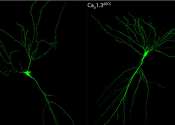A fungus that shrinks in size to better infect the brain
A fungus that is a common cause of fungal meningitis undergoes a remarkable transformation once it enters the body, allowing it to infect the brain, according to new research by scientists at University of Utah Health. Studies ...









